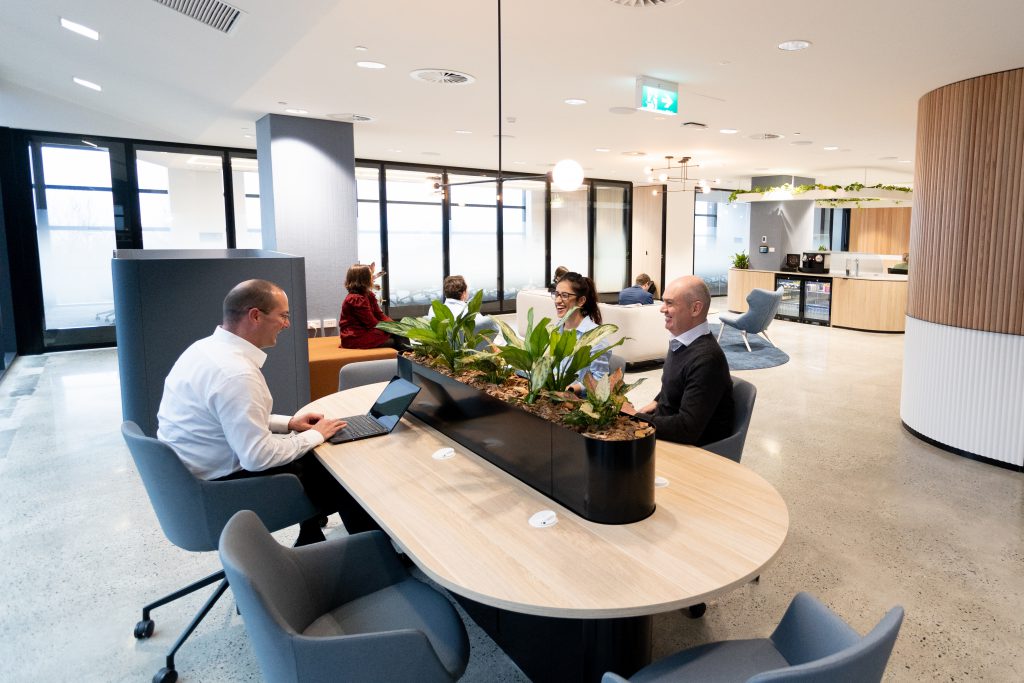COVID-19 physical distancing requirements and an increase in remote work have meant innovations in the way workplaces are designed and utilised.
Density
Flexible working-from-home arrangements aren't just a great way of slowing the spread of illness, they also allow businesses to reduce overheads.
Instead of rows of desks in a classic open-floor plan, offices become spaces for collaboration, with different workspaces set up to accommodate different types of activity.

Meanwhile, US branches of KPMG and Deloitte are experimenting with the ‘hub and spoke’ model, where they limit their central office space to one hub and have several smaller offices, or spokes, in different directions from the centre.
The idea behind this is to allow employees to work at offices closer to their homes when they do go into the office, as well as reduce real estate costs.
But it also helps divide the workforce in case of an office outbreak, ensuring better business continuity.
Positioning
Designers aren't just considering how many people are in a space, but how they're moving within it.
In the office, desks can be reoriented to prevent people from working directly opposite or behind each other.

In meeting rooms or conference spaces, the amount of available chairs is limited and placed in a way to maintain social distance.
Directional arrows placed on the floor can help prevent people from crossing paths, limiting their exposure to infection.
Division
Physical barriers between workers and customers may be necessary for some operations, such as supermarkets.
But businesses with office environments can also increase barriers between desks to help stop the spread of airborne illness.
Enter the 'office pod', which comes with the added benefit of reducing noise pollution.

Work-from-home forever?
Not everyone believes employees will continue to work from home post-pandemic. Property Council of Australia WA Executive Director Sandra Brewer says office space will continue to be important to an organisation's culture and brand.
“There's a lot of reflection that the reason that [work-from-home] has worked so well at the moment is that we all know each other - we've had established relationships to build upon," she says.
"We know young people in organisations learn from watching what the boss does or the decisions that are made, outside of the zoom call. We think that that plays a big part in the success of organisations."












